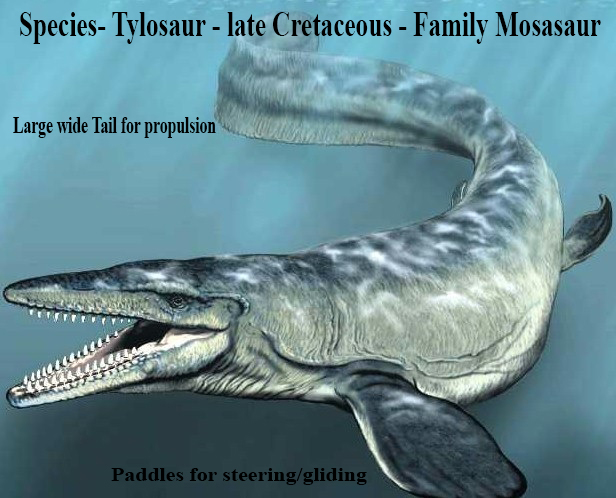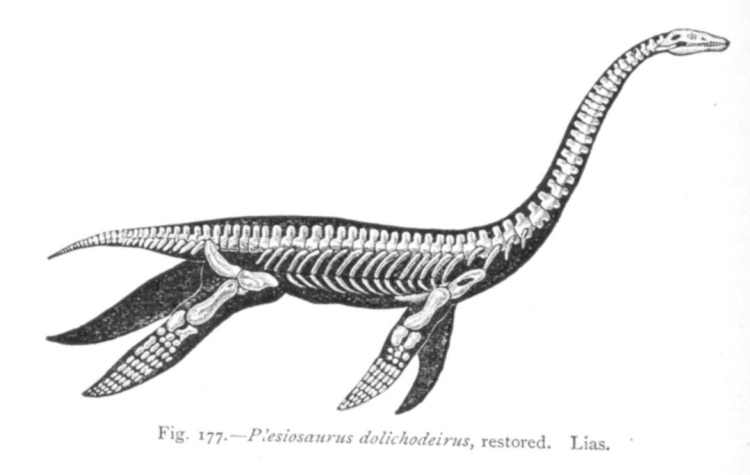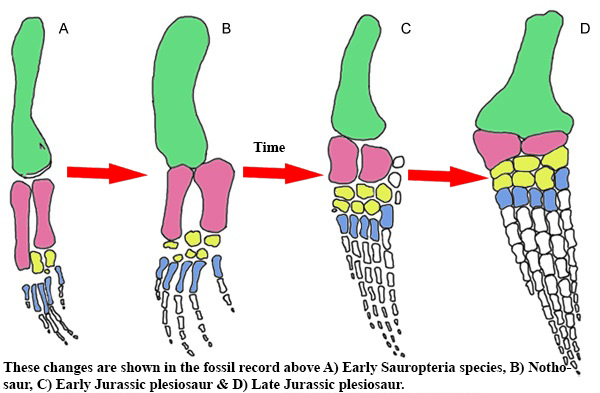What is an evolutionary trend? It can simply be described as a directional change within a single or multiple lineages that either allows that taxa to survive or adapt to changing surroundings. An early major trend is the return to the oceans of all the below groups and how they adapted from walking land creatures to powerful ocean predators at the top of their niches.
There are 4 main groups of reptiles that returned to the oceans during the Mesozoic. The Mosasaurs (similar to modern day monitor lizards in shape), Sea Turtles (relatives to our current turtles), Ichthyosaurs (reptiles with a similar form to dolphins) & Plesiosaurs (from the super order Sauropterygia – like the loch ness monster). All of which had to adapt to the seas high salt content. Other general adaptations would have been the ability to dive and streamlining for speed to catch prey. Below is a brief outline of the 4 main groups and their adaptations they evolved during the Mesozoic (Triassic 252MA to the end of the Cretaceous 66MA) also commonly referred to as ‘the age of reptiles’.
The Mosasaurs
As Mosasaurs ancestors returned to the sea like all marine reptiles they needed to advance their locomotary skills. This came in the evolved form of webbing between their toes that would eventually become flippers/paddles for steering and a slender body assisted with the long tail with its fluke shape to create more whip for propulsion. This use of a tail for movement in water most likely evolved from the ‘waddle’ seen in nowadays lizards. A clip of their form and shape changes can be seen below.
Ichthyosaurs
Ichthyosaurs spanned the Triassic to the beginning of the Cretaceous. Over this timescale they evolved along two major trends. 1) A streamlined shape like a fish/dolphin, a perfect example of convergent evolution (where species of different ancestry have evolved similar traits to adapt to the same environment) The below image shows the evolution of the fusiform. 2) The largest eyes relative to body size of any animal that has lived. This has been hypothesized to be linked to their ability to dive at depth and therefore lack of light would require a larger receptical to take in as much light as possible for these predators.
Sauropterygia – Plesiosaurs
The first thing you may notice about Plesiosaurs are their necks and these come in a range of lengths from short to long and are a case of divergent evolution thought to be dependent on their feeding strategy.
But Plesiosaur’s main advancement that we can see in the fossil record are its flippers which become steadily larger and stronger for increased propulsion giving rise to shortening of the tail that becomes more of a rudder or for balance. The below image shows how structure of the limb evolved from the beginning of Triassic to the end of the Jurassic for the Sauropterygia super-group showing a more rigid/sturdier paddle for increased power.
Sea turtles
The formation of a shell by turtles for defensive purposes was an important adaptation to predators and one that lasts today in their modern-day relatives. The thickening of the ribs to eventually form plates can be seen in the below clip. Another trend we see in turtles is the loss of teeth from their early ancestors being replaced by the beak we see today.
References:
Dinosaurs, spitfires and sea dragons Christoper McGowan 1992 ISBN: 067420770X
Evolution of Marine Reptiles, Evolution Education Outreach. Ryosuke Motani 2009
Marine Ecology – Marine reptile adaptations A Bertolero, J Donoyan, B Weitzmann – Extract chapter <http://www.eolss.net/sample-chapters>
Correlated trends in the evolution of the plesiosaur locomotory system F. Robin O’Keefe & Matthew T. Carrano 2005
Images:
http://plesiosauria.com/evolution.php
http://www.karencarr.com/News/motani
http://www.prehistoric-wildlife.com/
http://www.arcadiastreet.com/cgvistas/earth



